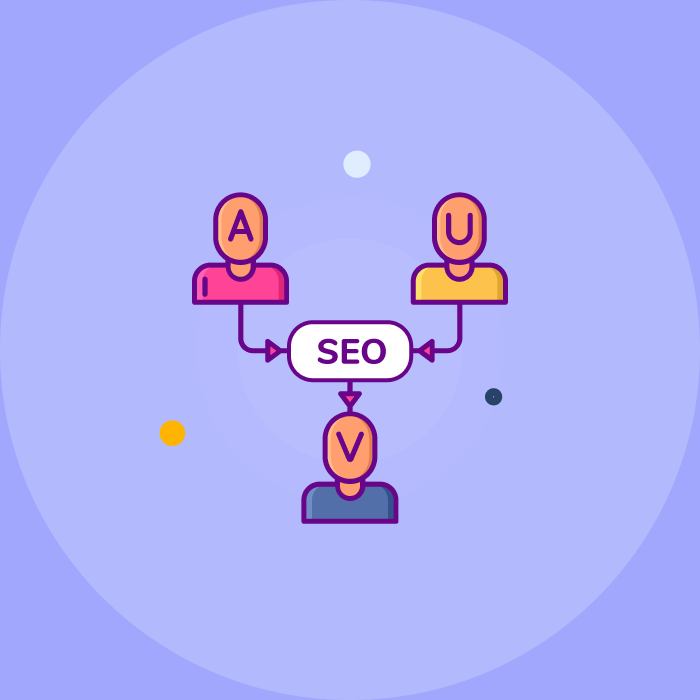Conversational Marketing can be your next go to strategy for customer onboarding & engagement. The combined power of organic & paid channels will boost your sales & reduces churn rate. Here is the comprehensive guide for you to follow for creating your next “Conversational Display Ad”!!
Every website visitor passes through certain steps before purchasing the desired product. All marketers follow this traditional process which starts with “Contact form” & ends with “Sales Call.” This process takes days!!
Only 43% of people answer cold calls & Email open rate has fallen to 20%. In other words, people don’t want to pass through this process and crave for “prompt response.” The Chatbot is here as a solution to the long tedious purchasing process.
It is no longer a buzzword as Facebook, IBM & Google are already using AI & Machine learning technologies to implement customized bots to address their customer's issues and offer virtual assistants.
One trending word from the past few months is “Conversational Marketing” and how chatbots can operate based on that using AI technology.
Before going further, let’s understand what Conversational Marketing is all about.
Conversational Marketing: It’s nothing but the smart interaction between human & virtual assistants based upon AI & Machine learning. In other words, brands use chatbots to interact with people to capture leads & convert them into more close sales deals.
For instance, if you want to invest your money in Mutual Funds but are unaware of the laws and regulations. You will go through the mutual fund's company website and checking the policy terms & conditions page.
However, the webpage can confuse you more with the complex and scattered information! So, in this case, the chatbot can be an instant relief.
The chatbot will start a conversation with – “Hello, How can I help you?” and then build engagement with certain questions and helps you with all your potential queries. In a few minutes, you are clear with your doubts, and the company got one qualified lead.
There is a myth that chatbot is only useful for online customer support and nothing more than that. But, some of them are out and are proving to be game changers across many business verticles.
1. Nika:
Nika prompts company employees to fill out their daily worksheets and manages them smartly with an automatic reporting feature. It also offers Slack integration. So, whenever employees open slack, it prompts them to do daily work!
2. Acebot:
With Acebot, it’s easy to create surveys with the integration of AI technology. The platform can be used for doing conversational surveys with a human touch. Any user can answer survey questions in messaging tone.
3. Twyla:
Twyla is a platform designed solely for businesses. It can be used for the following purposes:
- Exporting chats to identify user persona
- Customized widgets depending on the nature of business
- Routing conversations
- Customer Service
4. Wizu:
Wizu is a great platform for collecting “customer feedback” conversationally. With the bot, businesses can identify feedback patterns and should start making changes in daily operations. This way, companies can make their customer base more loyal.
5. X.ai:
With the x.ai bot, business professionals can schedule their daily meetings & appointments with simple clicks. Based on the platform they use for daily communication, it can be super adjustable!!
6. Xiaoice:
In 2014, Microsoft built Xiaoice chatbot for Chinese people. The bot was initially built to provide daily answers to the user’s query. In recent times, it can do the following things for users:
- Reciting poems
- Singing
- Reciting kid audio-books
- Working as a journalist
Conversational Search Engine Optimization
Conversational Marketing is not directly equivalent to chatbots. There are also other digital assistants (Google Assistant, Alexa, Cortana, Siri) out there who are working on conversational AI technology. Apart from asking questions to chatbots, we can interact with search engines in 3 different ways:-
- Text-based search
- Voice-based search
- Image-based search
From 3 mentioned types, marketers can work on a voice-based search to implement “Voice Assisted SEO” strategies. So, when “organic search” is involved, marketers need to shift focus from chatbots to voice-assisted search.
Ex. When you ask a question: Hey, Alexa shows me nearby grocery stores' timings!!
So, Alexa will not revert with 10 search results compared to the case with a text-based search. Alexa will give only one answer by checking with the respective search engine and exploring the knowledge graph. The marketer needs to understand this difference in “Search anatomy.” That answer is considered to be fallen under “Position Zero.” Marketers who want to implement SEO strategies can’t ignore voice search. In the next few years, there will be a fight for position zero by implementing voice-based search engine optimization strategies.
Conversational Tone
From the image & Cortana voice data, it is clear that people are using 1 to 3 words in text-based searches and an average of 4 to 6 in voice-assisted searches. So, the tone in voice search is more conversational, just like a human-to-human interaction.
Companies can find certain long tail keywords after identifying “buyer needs, wants and intention”. For voice-assisted SEO, there is a need to work on intent-based keywords and optimize the website content for the same.
Brands will have to work on the technical aspects of the website, like adding schema markup, working on long tail keywords, optimizing knowledge graphs and business listing to become the first available choice for digital assistants.
Conversational Ads
As a potential website visitor, what happens if a chatbot with a certain product display pops up on your browser screen and interacts with you, you have no idea that It’s an Ad!!
In October 2018, Google incubated Adlingo just came up with “Conversational Display Ads.”
From the above image, it is clear that the brand will have a new digital channel to advertise its products with a conversion experience. With a certain number of conversational ads on different platforms, brands will have analytics data of “buyer intention,” “past experience,” and “demographic details”.
Adlingo is the platform where advertisers can integrate their display ad format with chatbots. The interesting fact is Adlingo has no control or ownership of any chatbot.
They are allowing advertisers to use partner chatbot tools like Dialogue Flow, Microsoft Framework, Live Engage, Valassis Digital & Live Person to create conversational ad experiences.
Adlingo uses the programmatic model for serving ads through a google ad network. The marketers will be charged with the CPM cost model on every conversational ad campaign. Whenever a user sees the ad, the advertiser will be charged for that, but if the user starts interacting and engaging for a longer time, there will be no additional cost.
With Adlingo, advertisers have a new conversational channel to promote their products outside messaging apps (Ex.FB messenger). The initial estimates depict that the cost of engagement on adlingo will be lower than compared to FB messenger.
The only concern is that the ad should not be annoying as normal ad pop-ups otherwise, brands will have to go through certain backlash over the running time of the campaign.
Practical Implementation: Brands Perspective
1. HealthTap:
Healthtap is a platform for users who want quick medical advice from doctors. They integrated their bot with Facebook messenger. Once the user has installed the bot and asked for some health advice, he will get multiple popular answers initially provided by doctors within a certain time frame (24 hours). A “subscription plan” is also available if someone wants immediate support.
2. RapidMiner:
Rapidminer is a platform that delivers data science solutions to diverse clients from different industries. Initially, they were struggling with “poor pre-sales customer support,” and as a solution, they integrated “leadbot” with their website.
The leadbot answered widespread questions of visitors and helped the customer support team find qualified leads. This way, the intelligent leadbot captured 4000 new qualified leads with an additional $1M in revenue.
3. Spring:
Spring is a personalized shopper bot that supports visitors in online shopping. It asks a bunch of questions to visitors and is narrowed down to limited recommendations based on qualifying answers.
This way, visitors can save time with virtual interaction instead of searching intensively on the e-commerce website.
4. eBay:
eBay builds the most powerful chatbot for easy navigation related to e-commerce products. It works in collaboration with Google Home. So, every time shopper wants to purchase something from eBay; they have to ask: “Ok, Google, what are the best smartphone offers on eBay?” and they can get a very customized set of answers.
The only catch here is that the shopper has to use “Google Home” whenever he wants to buy anything from eBay.
5. Mastercard:
Imagine the user going to Facebook and interacting with the bot to get daily financial statements, spending patterns & historical purchase data. This can be possible with Mastercard bot integration on FB messenger.
This arrangement will benefit users who want to check account activity on the go and receive alerts on some unusual events without being logged in to a MasterCard account.
A Glimpse Into The Future
Conclusion:
The future is obvious for chatbots & conversational marketing. Businesses are gradually adapting conversational AI and transforming from “traditional support” to “virtual support” providers. When users make shopping decisions on bots, companies have tons of data to find all the insights and make future decisions on product development.
As the clutter is everywhere, so is “organic chatbot conversation.” Adlingo opened the gate of conversational ads & it’s interesting to see how brands will use that in the future apart from just tapping on Facebook messenger!!
Subscribe to weekly updates
You’ll also receive some of our best posts today






